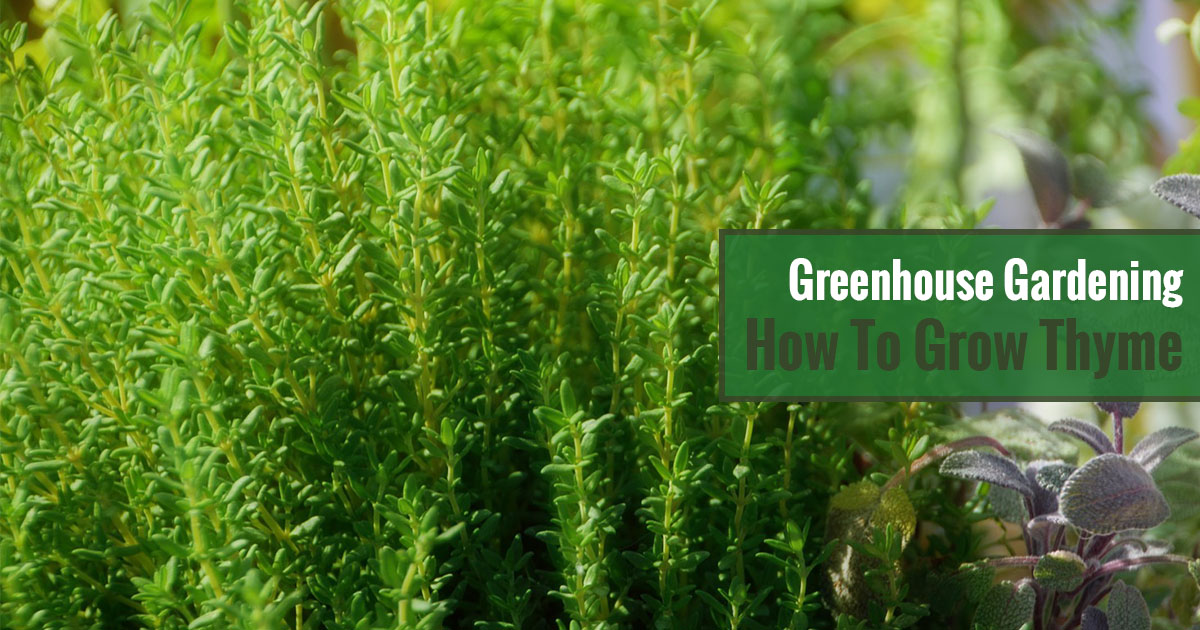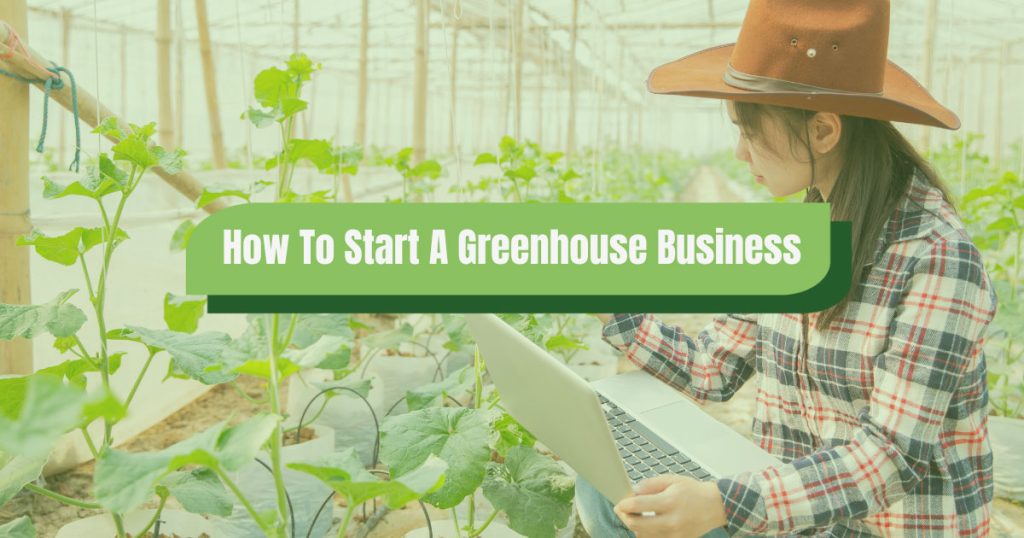

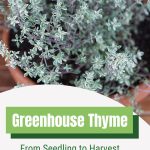

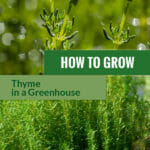
This attractive herb has lovely leaves and flowers. It needs very little attention which is perfect even for beginners. It can survive during the winter periods and will remain flourishing for many years. It rises to a height of up to 12 inches. Start your green thumb journey and grow thyme in a greenhouse easily!
Thyme is an aromatic, shrubby herb belonging to the mint family. Thyme is native to North Africa, Western Asia, and South-Eastern Europe. It is famous for its medicinal, culinary, and ornamental functions. It is a component of many different recipes throughout many different cuisines. The plant produces pink or lavender leaves, which provide an ornamental touch when they bloom in a garden. Thyme is easy to grow in your greenhouse just follow this clear guideline.
Quick overview of growing thyme in a greenhouse
- Type: Warm-season crop
- Time from seed to harvest: 75-90 days
- Germination temp: 60-75°F
- Time until first emergence: 14-28 days
- Best temp to grow: 60-85°F
- Height: 1-2 in
- Spread: 1-2 ft
- Light: Full sun (6-8h)
- Grow from seed: Scatter seeds on top of soil, barely cover
- Companions: Broccoli, cauliflower, cabbage, Brussels sprouts, strawberries, blueberries
- Keep away from: Parsley, cilantro, tarragon, basil and chives
Thyme varieties
These are the most familiar varieties to choose from:
- Golden-scented thyme has a slight lemon fragrance with tiny purple blossoms.
- Garden thyme is the most popular one used for seasoning.
- Ground cover thyme is also good for cooking and is a beneficial ground cover.
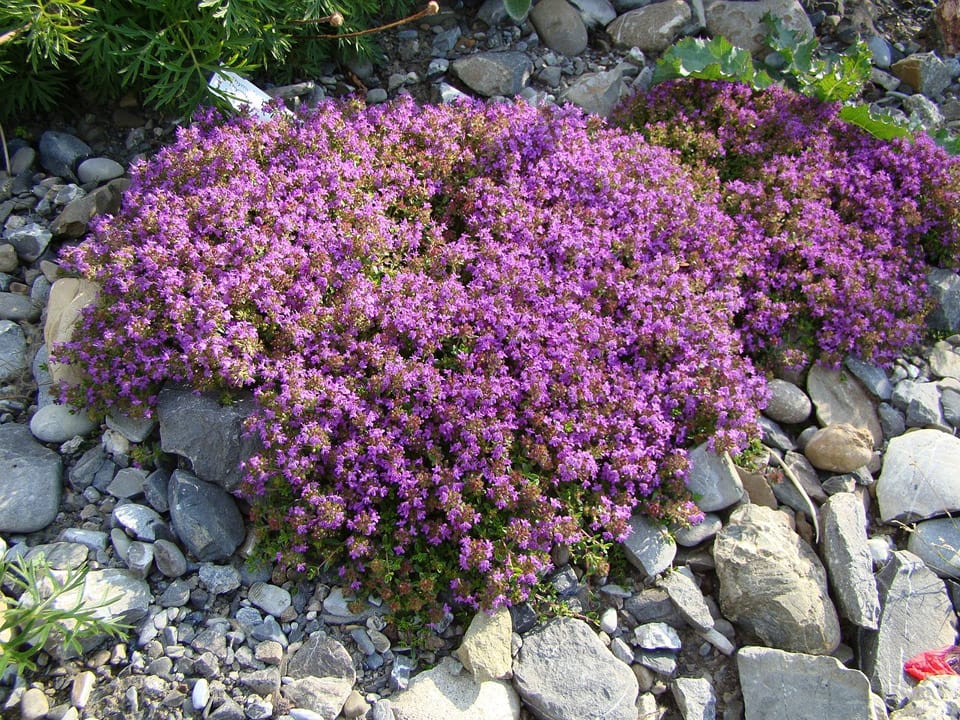
Things you should know before you start growing thyme in your greenhouse
Before you start growing your thyme you should know what this herb needs in order to thrive. Besides the soil and light requirements, you should also know that you can plant thyme in different ways.
Thyme can be developed from seeds, tip cuttings, and root/crown divisions. Starting from seeds can take up to one year to mature into a harvestable one. Developing from tip cuttings and divisions can offer a normally sized cutting in several months.
Favorable soil conditions to grow thyme in a greenhouse
Thyme thrives in light, well-drained soil with a modest concentration of nutrients. While the plant can tolerate a wide range of pH levels from neutral to alkaline (6.5 to 8.5), it will excel in soils with a pH range between 6.5 and 7.0.
It is better to grow thyme in a greenhouse using a mulch of organic material like well-rotted animal fertilizer, leaf mold, or homemade compost set throughout the roots. It will give a balanced quantity of nutrients during the year and shield it from frost if you don’t want to use a heater in winter.
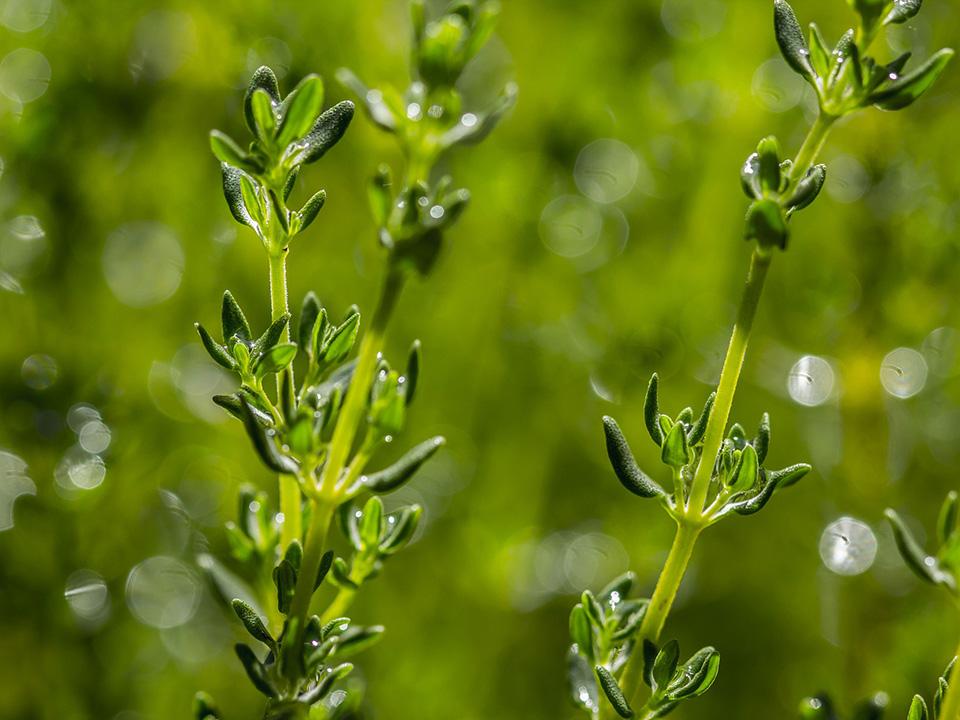
Suitable lighting and temperature
Thyme prefers full sun or mild shade conditions. It thrives in greenhouses that have adequate lighting. To increase the efficiency of propagation, plant the seeds under grow lights. Maintain warm temperatures in your greenhouse ranging from 60°F to 70°F. Choose from these grow lights for greenhouses and don’t let your thyme get pale!
Planting your thyme seeds
- To start thyme from seeds, plant them into little containers roughly 2 inches apart.
- Spread a very light coating of potting soil.
- Transplant your young seedlings into their final locations, roughly 12 inches apart in full sunlight.
- Since thyme grows slowly during its early stages, mulch heavily with straw to help suppress weeds.
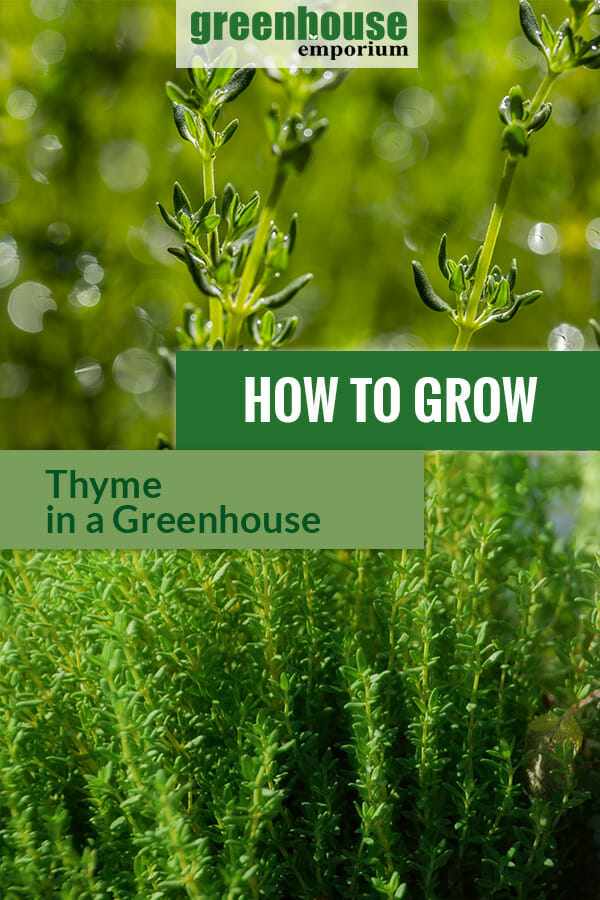
Planting your thyme from cuttings and divisions
The original perspective of reproduction from cuttings is to use a healthful plant because an entirely normal plant can provide you disease-free, good tissue and a healthy root system for you to start another plant.
- Use your thyme cutting at a node on its stalk where the leaves connect. It is where the root structures are most suitable.
- The perfect cutting length is 2 to 6 inches long with a fresh stalk, tough leaves, without flowers or buds because we want to focus more on establishing a healthy root first than blooming flowers.
- Discard the leaves below.
- Then plant the cut end into a pot filled with moistened soil mixture.
- Store the pot in a warm, shaded spot and keep it lightly moist.
- Reduce watering once your cuttings have rooted.
- Place the pot in a bright area.

Plant division is a traditional system done by growers in order to maintain healthy plants and produce supplementary goods. It includes digging up your plants and separating them into two or more parts.
- Choose healthy thyme which is at least 3 years old.
- Dig up the entire plant and divide it into parts.
- Eliminate as much soil as possible from its roots.
- 3 or 4 divisions for every thyme plant are normally sufficient because smaller divisions may need a longer time to secure than the bigger ones.
- If your herb is unwilling to be pulled apart using your hands, try to use two hand forks to divide it into sections.
- Trim the leaves of each division to reduce water loss as the herb regrows.
- Simply plant your divisions anywhere you want.
How to take care of your thyme
While the herb is hardy with minimal susceptibility to diseases, it can easily be damaged by attacks from spider mites and/or whiteflies.
Alternaria blight looks like little, circular, yellow, brown, or black spots with centered rings that develop first under shaded leaves. The holes in leaves are created by wounds drying and leaves falling out. Pick those contaminated leaves. Practice the wide plant spacing to increase airflow around leaves.
Watering
Thyme needs to be regularly watered. However, allow the soil to dry before soaking the ground again. Thyme’s uptake of nutrients is effective under this watering regime. Ideally, supply about two inches of water every week. Water only in extremely dry states and never fertilize too much.
Reaping thyme – Harvest time!
Harvest moderately in the first year. Pinch the end of the leaf close to the stem and pluck it off the stem. It is also best to remove the sprigs by using scissors. Alternatively, you can harvest the stems and let the leaves dry on the stems before falling off.
FAQs about growing thyme in a greenhouse
How big does thyme grow?
Thyme is a low-growing ground cover that spreads more than it grows tall. Typical growth is 1-2in high and 1-2ft wide.
How fast does thyme grow?
Thyme is slow to start from seed with a germination time of up to 28 days. Once germinated, thyme continues to grow at a slow and steady rate. It does respond to pruning by growing slightly faster and some creeping cultivars will grow at a slightly faster pace.
Are thyme flowers edible?
The leaves, stems and flowers of thyme plants are edible. The pretty, delicate thyme flowers are blue to purple and can be used to garnish dishes. The flowers have the same distinct flavor as the rest of the edible thyme plant.

